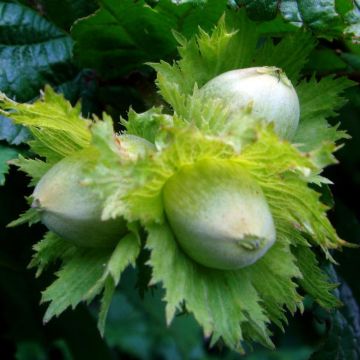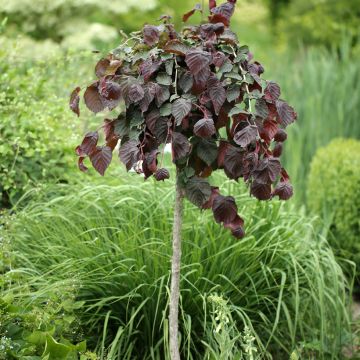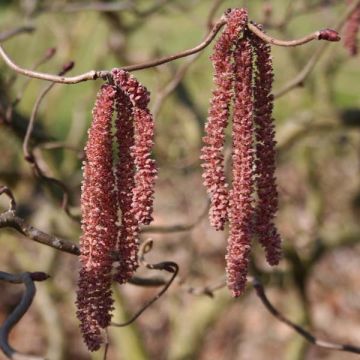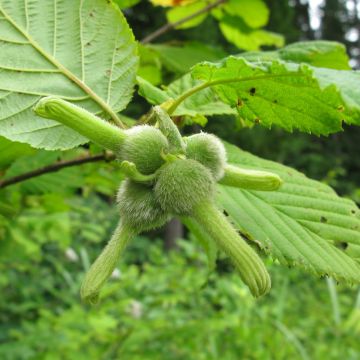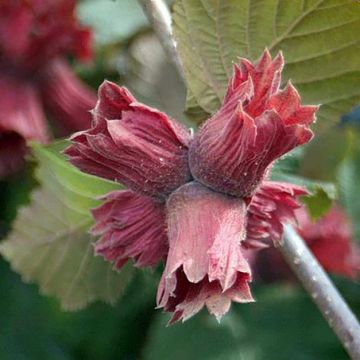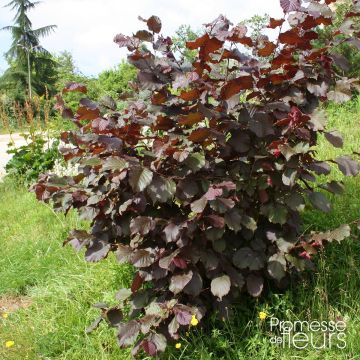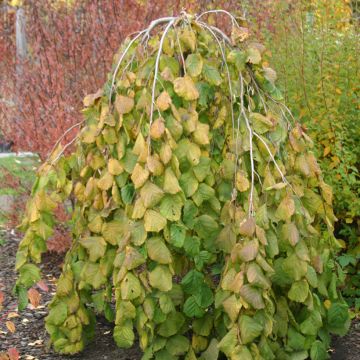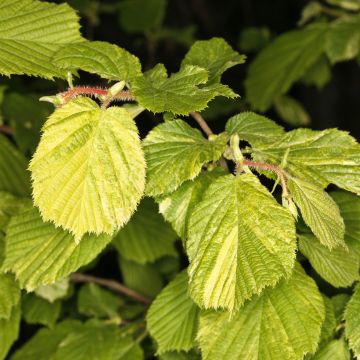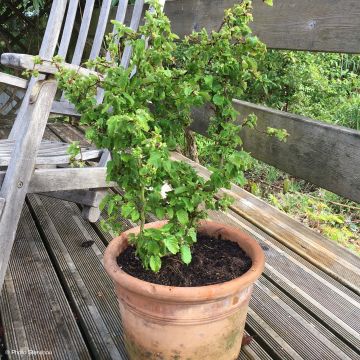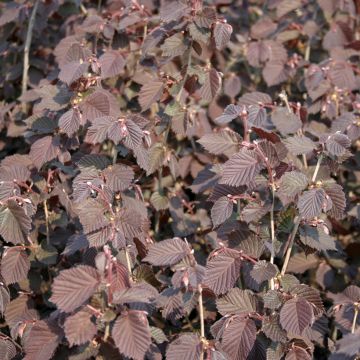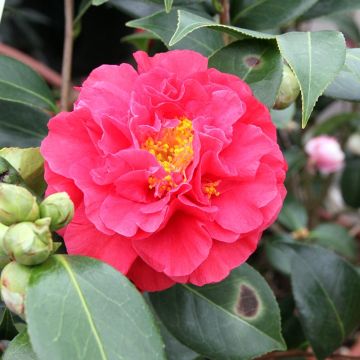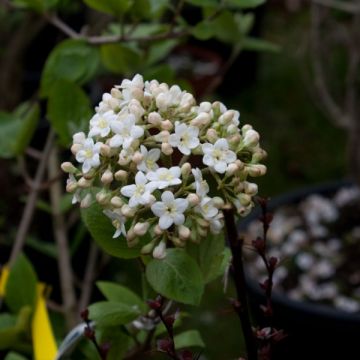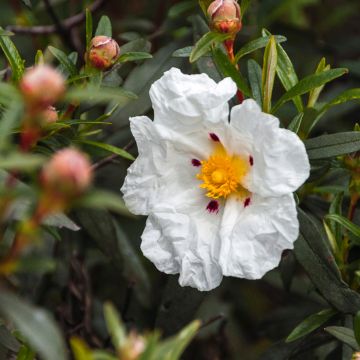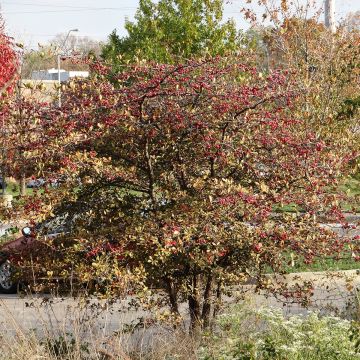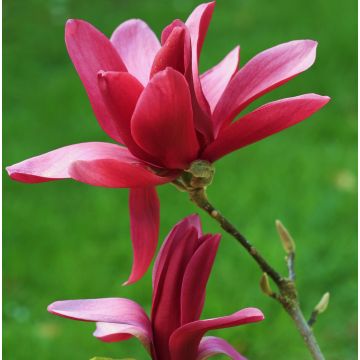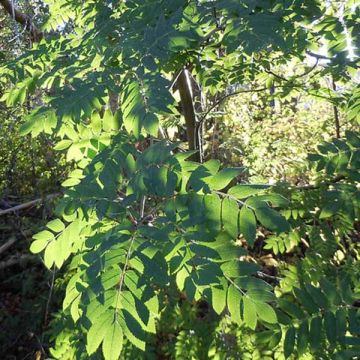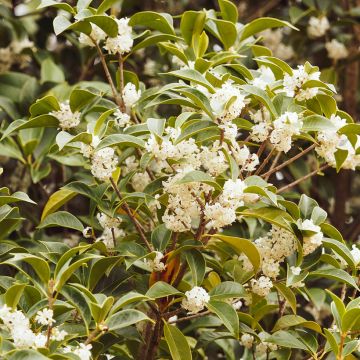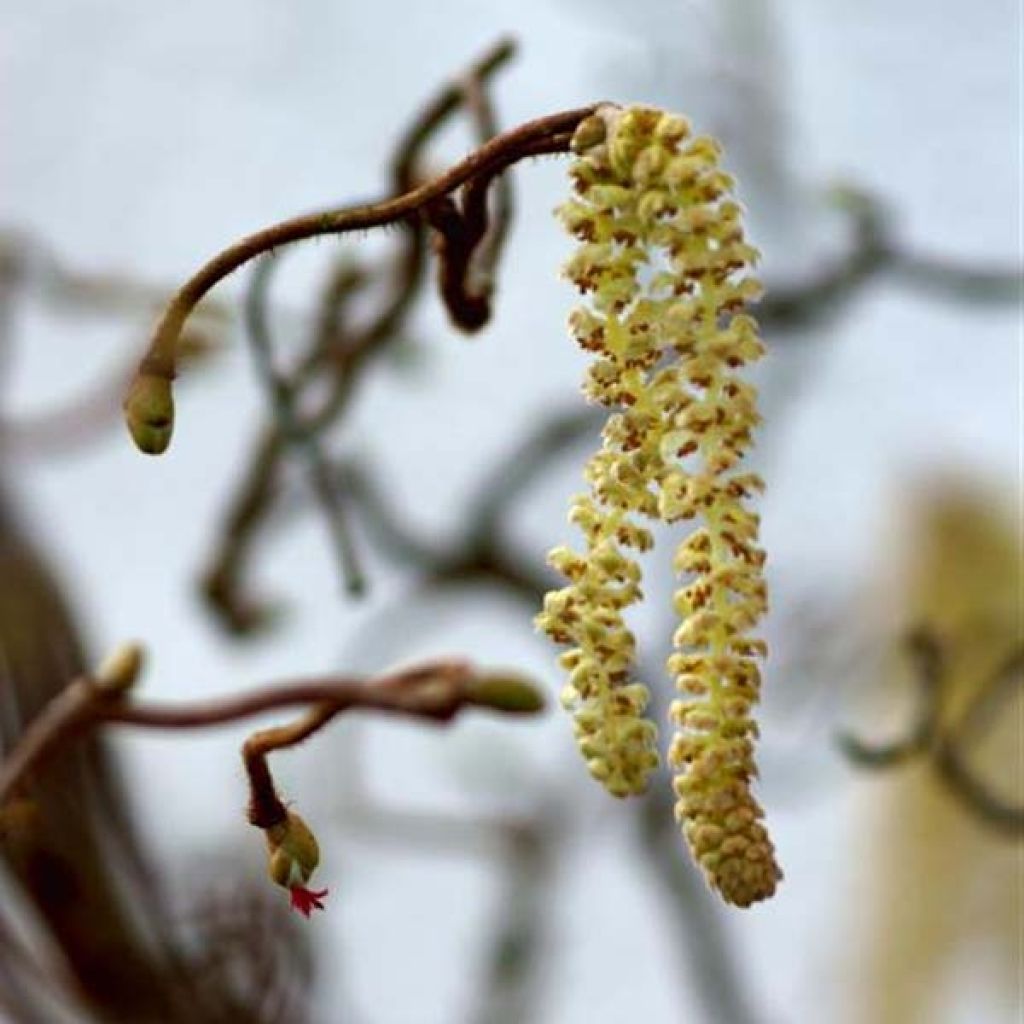

Corylus avellana Contorta - Common Hazel
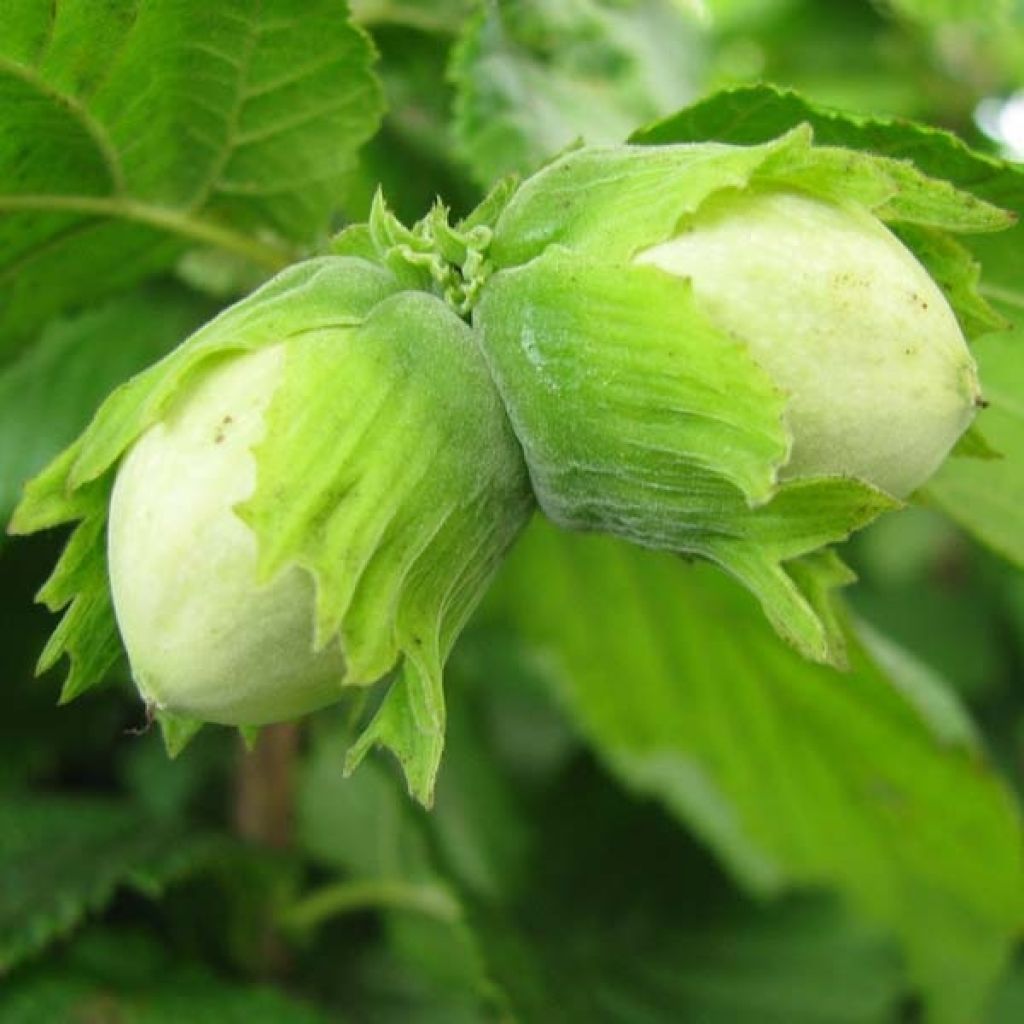

Corylus avellana Contorta - Common Hazel
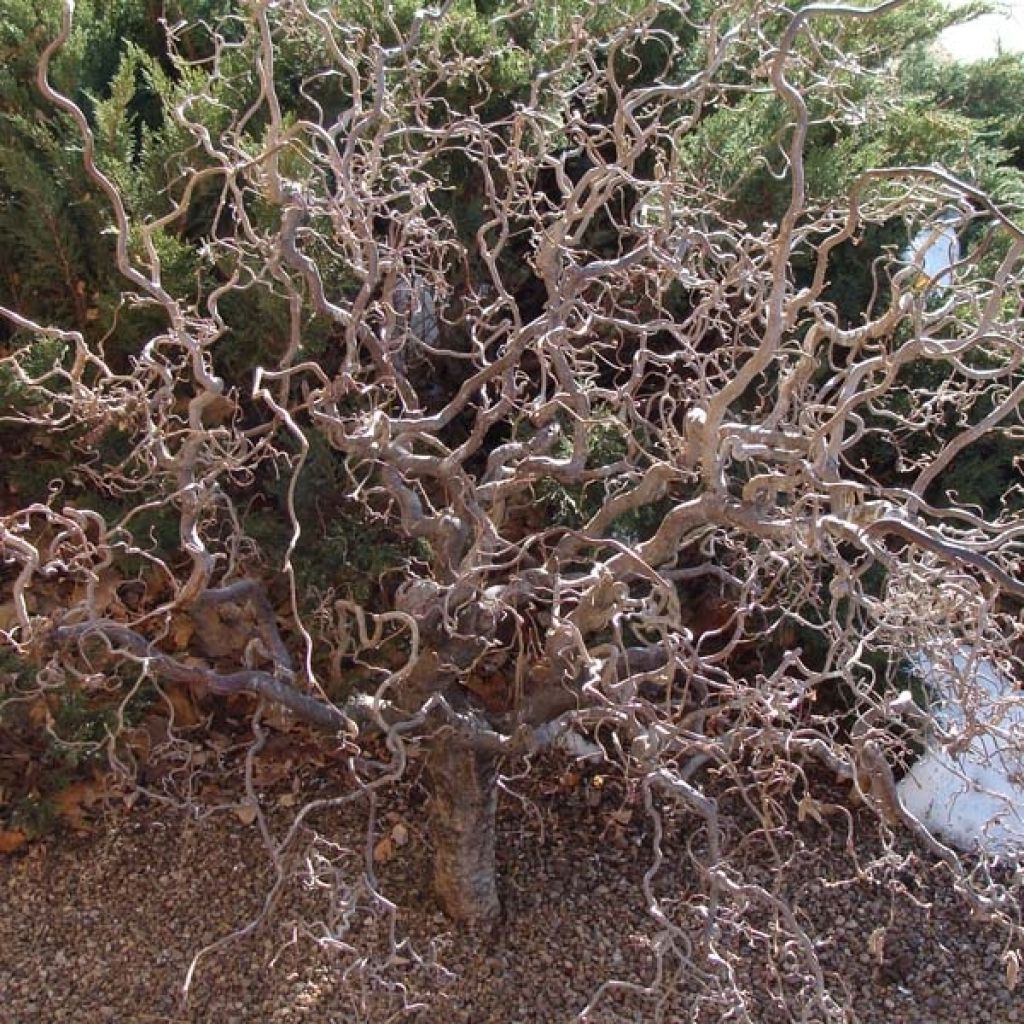

Corylus avellana Contorta - Common Hazel
Corylus avellana Contorta - Common Hazel
Corylus avellana Contorta
Common Hazel, European Hazel
This item cannot be shipped to the selected country
Delivery charge from €5.90
Oversize package delivery charge from €6.90
More information
Schedule delivery date,
and select date in basket
This plant carries a 24 months recovery warranty
More information
We guarantee the quality of our plants for a full growing cycle, and will replace at our expense any plant that fails to recover under normal climatic and planting conditions.
From €5.90 for pickup delivery and €6.90 for home delivery
Express home delivery from €8.90.
Oversize package: home delivery by special carrier from €6.90 per order..
Express home delivery from €8.90.


Does this plant fit my garden?
Set up your Plantfit profile →
Description
Corylus avellana 'Contorta' is a very curious but very attractive form of wild hazel bush. It is called the twisted hazel because of its unusual dark, sinuous and interlaced branches. In February-March, its bare branches are adorned with pendant yellow male catkins that sway in the slightest breeze. Then its foliage appears, also unusual, more curled and coiled than that of the common hazel. Don't count on 'Contorta' to offer you a good harvest of hazelnuts; they are rare!
Corylus avellana belongs to the Betulaceae family, just like birch. It is a small monoecious fruit tree, bearing on the same individual male inflorescences distinct from female inflorescences. The common hazel is a species of light and rather neutral, fairly fertile soil that is not too dry.
'Contorta' was discovered around 1863 in England in a garden hedge. It differs from the common hazel by a slower growth, a slightly smaller development and its very twisted branches. The bush develops one or more equally twisted trunks, topped by a dense and rounded crown. At the age of 10, it will reach about 3 m (9.8 ft) in height by 2 m (6.6 ft) in width. It will not exceed 5 m (16.4 ft) in height and can live for about 60 years. Its young, hairy branches are green in colour, opening from a light brown bark that becomes very dark over time. Flowering takes place in two stages: in February-March, pendant yellow male catkins appear, 5 cm (2 in) long, and popular with bees. In March-April, subtle female flowers bloom. They have the shape of a bud, 6 mm to 8mm (0.2 in to 0.3 in), partially concealing bright red stigmas. Foliage appears late in May. Very dense, it gives the plant its bushy appearance. The leaves are rounded in shape, strongly veined, slightly crisped and curled, and measure 6 cm to 10cm (2.4 in to 3.9 in) long. The rare fruits that form on 1-year-old shoots in older subjects are achenes called hazelnuts. They are white and then turn reddish-brown when ripe. Grouped in 1 to 4, they measure 2 cm (0.8 in) in diameter, and ripen in late August or early September.
This twisted hazel will delight lovers of unique plants. Easy to grow in ordinary soil, it is not recommended in too arid situations. It is obviously magnificent planted as a solitary specimen, especially in winter when its unique silhouette appears against a leaden sky. It could also be planted in a sunny spot in a Japanese-style garden. Cultivating it in a large container, on a terrace or balcony, is also possible. Amateur gardeners of curiosities can also adopt, in a large garden, the unique Robinia pseudoacacia 'Tortuosa'.
Report an error about the product description
Corylus avellana Contorta - Common Hazel in pictures


Plant habit
Flowering
Foliage
Safety measures
Botanical data
Corylus
avellana
Contorta
Betulaceae
Common Hazel, European Hazel
Cultivar or hybrid
atteinterespiratoire
Cette plante peut entraîner des symptômes allergiques.
Evitez de la planter si vous ou vos proches souffrez de rhinite saisonnière ("rhume des foins").
Davantage d'informations sur https://plantes-risque.info
Other Corylus - Hazelnuts
Planting and care
Easy to grow and perfectly hardy, Corylus avellana 'Contorta' will adapt to any good garden soil that is not too dry, without excessive limestone or acidity. It appreciates a sunny to semi-shaded position and will benefit from pruning. In late autumn, aerate the base by cutting back any obstructive branches.
Planting period
Intended location
Care
-
, onOrder confirmed
Reply from on Promesse de fleurs
Spring-flowering shrubs
Haven't found what you were looking for?
Hardiness is the lowest winter temperature a plant can endure without suffering serious damage or even dying. However, hardiness is affected by location (a sheltered area, such as a patio), protection (winter cover) and soil type (hardiness is improved by well-drained soil).

Photo Sharing Terms & Conditions
In order to encourage gardeners to interact and share their experiences, Promesse de fleurs offers various media enabling content to be uploaded onto its Site - in particular via the ‘Photo sharing’ module.
The User agrees to refrain from:
- Posting any content that is illegal, prejudicial, insulting, racist, inciteful to hatred, revisionist, contrary to public decency, that infringes on privacy or on the privacy rights of third parties, in particular the publicity rights of persons and goods, intellectual property rights, or the right to privacy.
- Submitting content on behalf of a third party;
- Impersonate the identity of a third party and/or publish any personal information about a third party;
In general, the User undertakes to refrain from any unethical behaviour.
All Content (in particular text, comments, files, images, photos, videos, creative works, etc.), which may be subject to property or intellectual property rights, image or other private rights, shall remain the property of the User, subject to the limited rights granted by the terms of the licence granted by Promesse de fleurs as stated below. Users are at liberty to publish or not to publish such Content on the Site, notably via the ‘Photo Sharing’ facility, and accept that this Content shall be made public and freely accessible, notably on the Internet.
Users further acknowledge, undertake to have ,and guarantee that they hold all necessary rights and permissions to publish such material on the Site, in particular with regard to the legislation in force pertaining to any privacy, property, intellectual property, image, or contractual rights, or rights of any other nature. By publishing such Content on the Site, Users acknowledge accepting full liability as publishers of the Content within the meaning of the law, and grant Promesse de fleurs, free of charge, an inclusive, worldwide licence for the said Content for the entire duration of its publication, including all reproduction, representation, up/downloading, displaying, performing, transmission, and storage rights.
Users also grant permission for their name to be linked to the Content and accept that this link may not always be made available.
By engaging in posting material, Users consent to their Content becoming automatically accessible on the Internet, in particular on other sites and/or blogs and/or web pages of the Promesse de fleurs site, including in particular social pages and the Promesse de fleurs catalogue.
Users may secure the removal of entrusted content free of charge by issuing a simple request via our contact form.
The flowering period indicated on our website applies to countries and regions located in USDA zone 8 (France, the United Kingdom, Ireland, the Netherlands, etc.)
It will vary according to where you live:
- In zones 9 to 10 (Italy, Spain, Greece, etc.), flowering will occur about 2 to 4 weeks earlier.
- In zones 6 to 7 (Germany, Poland, Slovenia, and lower mountainous regions), flowering will be delayed by 2 to 3 weeks.
- In zone 5 (Central Europe, Scandinavia), blooming will be delayed by 3 to 5 weeks.
In temperate climates, pruning of spring-flowering shrubs (forsythia, spireas, etc.) should be done just after flowering.
Pruning of summer-flowering shrubs (Indian Lilac, Perovskia, etc.) can be done in winter or spring.
In cold regions as well as with frost-sensitive plants, avoid pruning too early when severe frosts may still occur.
The planting period indicated on our website applies to countries and regions located in USDA zone 8 (France, United Kingdom, Ireland, Netherlands).
It will vary according to where you live:
- In Mediterranean zones (Marseille, Madrid, Milan, etc.), autumn and winter are the best planting periods.
- In continental zones (Strasbourg, Munich, Vienna, etc.), delay planting by 2 to 3 weeks in spring and bring it forward by 2 to 4 weeks in autumn.
- In mountainous regions (the Alps, Pyrenees, Carpathians, etc.), it is best to plant in late spring (May-June) or late summer (August-September).
The harvesting period indicated on our website applies to countries and regions in USDA zone 8 (France, England, Ireland, the Netherlands).
In colder areas (Scandinavia, Poland, Austria...) fruit and vegetable harvests are likely to be delayed by 3-4 weeks.
In warmer areas (Italy, Spain, Greece, etc.), harvesting will probably take place earlier, depending on weather conditions.
The sowing periods indicated on our website apply to countries and regions within USDA Zone 8 (France, UK, Ireland, Netherlands).
In colder areas (Scandinavia, Poland, Austria...), delay any outdoor sowing by 3-4 weeks, or sow under glass.
In warmer climes (Italy, Spain, Greece, etc.), bring outdoor sowing forward by a few weeks.

































